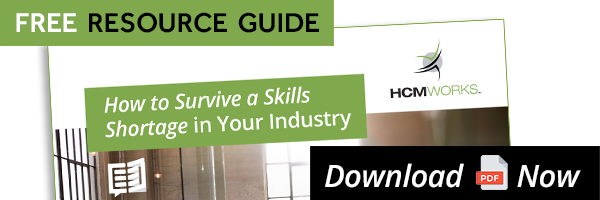The way organizations operate has changed significantly in the past few years, and now with Covid-19 there are even more factors at play. The biggest change for the majority of businesses is a transition to project-based roles using remote workers over full-time positions, which has sparked a seismic shift in the workforce.
When it comes to acquiring top talent in today's market, organizations are now required to be innovative if they are to stay competitive. This goes beyond simply filling full-time positions or accessing the contingent workforce to augment, or even replace, parts of your company’s permanent workforce.
According to a report from Accenture, titled ‘Shaping the Agile Workforce’, 79 per cent of executives agree that work is shifting from roles to projects. However, it also found that up to 40 per cent of companies experience talent shortages that impact their ability to adapt and innovate.
Businesses across the world are finding it increasingly difficult to hire top workers and meet workforce targets.
There is one solution, however, that can completely solve the issues surrounding skilled labour shortages and help your company transition to project-focused processes - the creation of an agile workforce.
What is an agile workforce?
An agile workforce strategy is one that mixes full-time, part-time and contingent workers, along with other flexible strategies that encourage workers (both old and prospective) to be constantly engaged with your company. This ensures that your company is able to constantly meet its ever-changing workforce targets.
By having access to an agile workforce that can be seamlessly scaled up or down depending on your company’s needs, your business will be able to offer specialized skills even when you don’t have the in-house expertise, expand your workforce in line with business growth or seasonal demand and much more.
No matter what is in store for the future of your company, whether it’s rapid growth or a change in the services you offer, an agile workforce will ensure you always have the right size workforce with the right expertise on hand.
What are the benefits of an agile workforce?
There is a range of benefits your organization will realize from creating an agile workforce. Here are just a few of the key benefits for your business:
Cost savings: By swapping to project-based work and creating an agile workforce, your business will be able to ensure it only hires workers on highly specialized needs and only when they’re needed. You can not only avoid the financial commitment of full-time workers that aren’t needed year-round but by hiring and managing your workforce smarter, you’ll be able to put money into the right resources when they’re needed.
Instant scalability: Finding the right full-time workers is not only expensive, but it’s also a long process. Having an on-hand agile workforce, however, will ensure your company can scale up or down when required. This will allow you to meet your business goals at any given moment.
Quickly fill skills gaps: A survey from McKinsey found that, due to increased automation and digitization, 64 per cent of US executives believe they will need to retrain or replace more than a quarter of their workforce by 2023. Agile freelancers can be onboarded in a matter of days to fill these skills gaps where needed.
It’s important to remember that managing an agile workforce takes specialized skill and expert knowledge. It’s unlikely your organization will have access to either of these in-house. That’s why you should consider outsourcing your agile workforce management to a managed services provider (MSP) that has experience with the contingent workforce.
Are you looking for more information about how HCMWorks can help you create an agile workforce, while at the same time ensuring your contingent workers are properly managed? Contact us today to find out.



